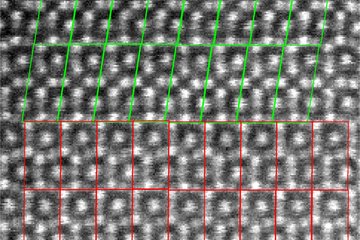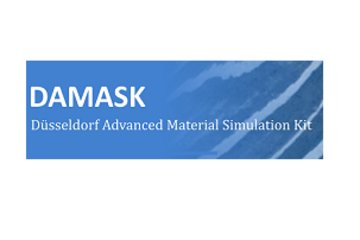All genres
261.
Journal Article
Electrical properties and structure of grain boundaries in n-conducting BaTiO3 ceramics. Journal of the European Ceramic Society 31 (5), pp. 763 - 771 (2011)
262.
Journal Article
Dislocation storage in single slip-oriented Cu micro-tensile samples: New insights via X-ray microdiffraction. Philosophical Magazine 91 (7-9), pp. 1256 - 1264 (2011)
263.
Journal Article
Microstructure evolution and mechanical properties of an intermetallic Ti–43.5Al–4Nb–1Mo–0.1B alloy after ageing below the eutectoid temperature. International Journal of Materials Research 102 (6), pp. 703 - 708 (2011)
264.
Journal Article
Structural characterization of a Cu/MgO(001) interface using CS-corrected HRTEM. Thin Solid Films 519 (5), pp. 1662 - 1667 (2010)
265.
Journal Article
Investigation of the fatigue behavior of Al thin films with different microstructure. Materials Science and Engineering A: Structural Materials Properties Microstructure and Processing 527 (29-30), pp. 7757 - 7763 (2010)
266.
Journal Article
Adhesion energies of Cr thin films on polyimide determined from buckling: Experiment and model. Acta Materialia 58 (16), pp. 5520 - 5531 (2010)
267.
Journal Article
Unveiling the atomic and electronic structure of the VN/MgO interface. Physical Review B 82, pp. 060103-1 - 060103-4 (2010)
268.
Journal Article
Micron-sized fracture experiments on amorphous SiOx films and SiOx/SiNx multi-layers. Thin Solid Films 518 (20), pp. 5796 - 5801 (2010)
269.
Journal Article
In situ TEM study of microplasticity and Bauschinger effect in nanocrystalline metals. Acta Materialia 58 (14), pp. 4774 - 4782 (2010)
270.
Journal Article
Microplasticity phenomena in thermomechanically strained nickel thin films. Journal of Materials Science 45 (14), pp. 3874 - 3881 (2010)
271.
Journal Article
Can local hot spots induce α2/γ lamellae during incomplete massive transformation of γ-TiAl alloys? Intermetallics 18 (5), pp. 972 - 976 (2010)
272.
Journal Article
Stress, Sheet Resistance, and Microstructure Evolution of Electroplated Cu Films During Self-Annealing. IEEE Transactions 10 (1), pp. 47 - 54 (2010)
273.
Journal Article
Study of nanometer-scaled lamellar microstructure in a Ti–45Al–7.5Nb alloy – Experiments and modeling. Intermetallics 18 (4), pp. 509 - 517 (2010)
274.
Journal Article
Can micro-compression testing provide stress–strain data for thin films? A comparative study using Cu, VN, TiN and W coatings. Thin Solid Films 518 (5), pp. 1517 - 1521 (2009)
275.
Journal Article
Interface fracture properties of thin films studied by using the micro-cantilever deflection technique. Surface and Coatings Technology 204 (6-7), pp. 878 - 881 (2009)
276.
Journal Article
A comparative micro-cantilever study of the mechanical behavior of silicon based passivation films. Thin Solid Films 518 (1), pp. 247 - 256 (2009)
277.
Journal Article
Miniaturized single-crystalline fcc metals deformed in tension: New insights in size-dependent plasticity. Progress in Materials Science 54 (6), pp. 664 - 688 (2009)
278.
Journal Article
Stress-controlled fatigue behaviour of micro-sized polycrystalline copper wires. Materials Science and Engineering A: Structural Materials Properties Microstructure and Processing 515 (1-2), pp. 71 - 78 (2009)
279.
Journal Article
Micro-compression testing: A critical discussion of experimental constraints. Materials Science and Engineering A: Structural Materials Properties Microstructure and Processing 505 (1-2), pp. 79 - 87 (2009)
280.
Journal Article
Influence of the indenter tip geometry and environment on the indentation modulus of enamel. Journal of Materials Research 24 (3), pp. 616 - 625 (2009)











